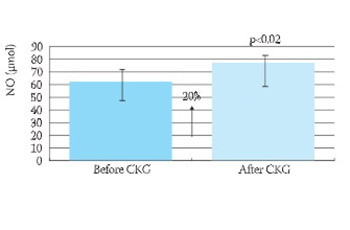Nitric Oxide in Serum and Renal Tissue During Compensatory Renal Hypertrophy in Rats
DOI:
https://doi.org/10.17305/bjbms.2006.3209Keywords:
nitric oxide, serum, renal tissue, unilateral nephrectomyAbstract
Nitric oxide (NO) level in serum and renal tissue has been examined in 15 male Wistar rats, body weight 200-250 g, 7 days after unilateral nephrectomy. All rats were ether-anaesthetized and the kidneys were removed by dorsolateral approach. NO concentration in serum and renal tissue was determined by classic colorimetric Griess reaction. Conversion of NO(3)(2-) into NO(2)(2-) was done with elementary zinc. Results have shown that NO concentration in renal tissue is statistically higher in rats 7 days after unilateral nephrectomy then in control renal tissue before compensatory kidney growth (p<0,02). There is no difference between NO concentration in serum before unilateral nephrectomy and 7 days after nephrectomy. These findings suggest that NO may play an important role in mediating the hemodynamic changes associated with reduced renal mass.
Citations
Downloads

Downloads
Published
How to Cite
Accepted 2018-02-18
Published 2006-02-20









